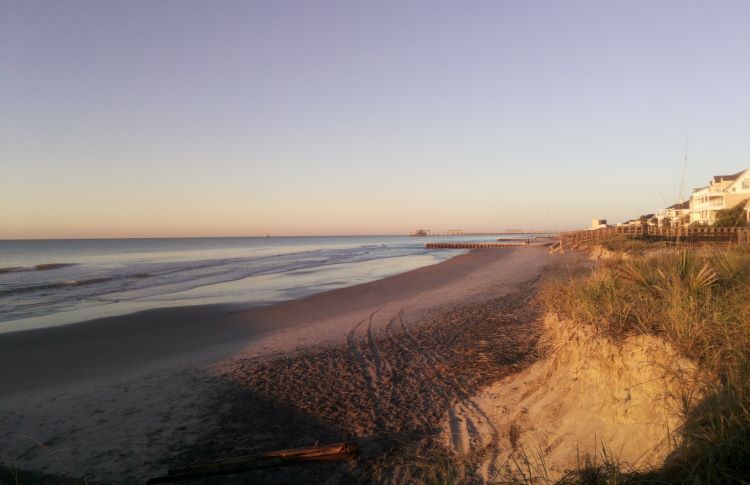
WebCOOS camera view down 6th Avenue Beachfront in Folly Beach, SC. Photo credit: WebCOOS
As the need for ocean data and information increases worldwide, there is a constant demand to innovate sensors, data management, decision support products, and other technical capabilities that will improve our ability to monitor and forecast environmental conditions with greater efficiency. To this end, the U.S. IOOS Office is pleased to announce $5.8 M in funding for new projects under its Ocean Technology Transition program in 2023.
The new projects, selected under a competitive funding opportunity, propose new and efficient ways to gather more observations covering more of our coasts and waters, often at lower cost. They are:
- Moss Landing Marine Lab/San Jose State University Research Foundation is receiving $630,043 to compare and validate a new low-cost digital holography based cell imaging platform (Aqusens) against the Imaging Flow CytoBot towards increasing capacity building for field-based harmful algal bloom (HAB) cell detection.
- Oregon State University is receiving $1,200,000 for an academic-industry-tribal partnership to extend the capacity of coastal ocean observing by refining a low-cost dissolved oxygen sensor for expanded deployment, improve data delivery to end users, and expand the pool of users and observers.
- The University of Washington is receiving $1,199,542 to produce and institutionalize a flexible and dependable Environmental Sample Processor (ESP) mooring program in the Pacific Northwest for sustained monitoring of domoic acid, eDNA, and other oceanographic parameters needed for HAB monitoring.
- The Southeast Coastal Ocean Observing Regional Association is receiving $1,195,347 for the expansion of the coastal webcam observing network WebCOOS from a regional network to a national scale. Products derived from the WebCOOS network show rip current locations, dune overwash, shoreline erosion, beach usage, and flood monitoring — all critical information needs of ocean and coastal managers.
- CODAR Ocean Sensors Ltd. is receiving $734,010 for a project to apply open source artificial intelligence methods to high-frequency radar signal processing, which will improve the quality of available HFR data nationwide.
- The Alaska Ocean Observing System is receiving $898,728 for a project to transition enhanced public ocean information tools based on NOAA’s Cook Inlet Ocean Forecast System, as well as providing improved user interfaces for use of model information.
The Ocean Technology Transition program, launched in 2013, focuses on developing and improving observation technologies for ocean chemical, biological, and physical parameters to monitor changing conditions in the oceans, coasts and Great Lakes. Technologies of interest include hardware and software platforms, sensors, and data transfer technologies that collect observations in the marine and Great Lakes environments. You can read more about the OTT program here, and find out more about these new projects under the "project information" tab.
 Official websites use .gov
A .gov website belongs to an official government organization in the United States.
Official websites use .gov
A .gov website belongs to an official government organization in the United States.
 Secure .gov websites use HTTPS
A lock or https:// means you’ve safely connected to the .gov website. Share sensitive information only on official, secure websites.
Secure .gov websites use HTTPS
A lock or https:// means you’ve safely connected to the .gov website. Share sensitive information only on official, secure websites.
